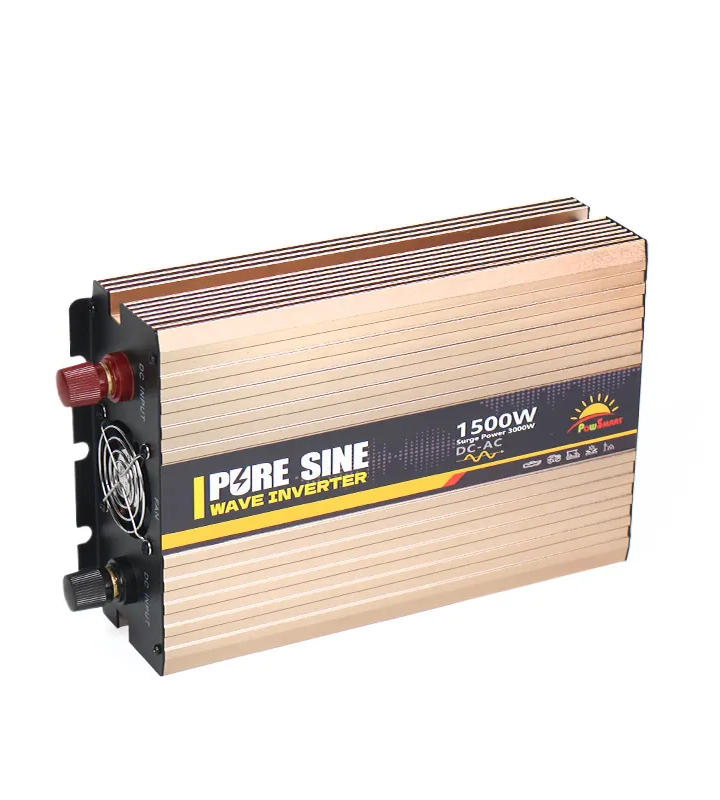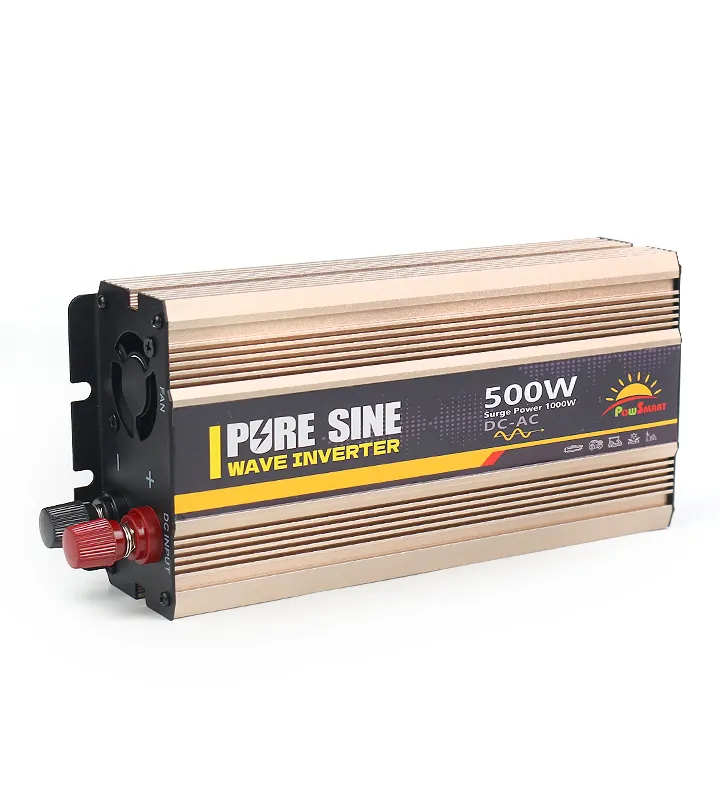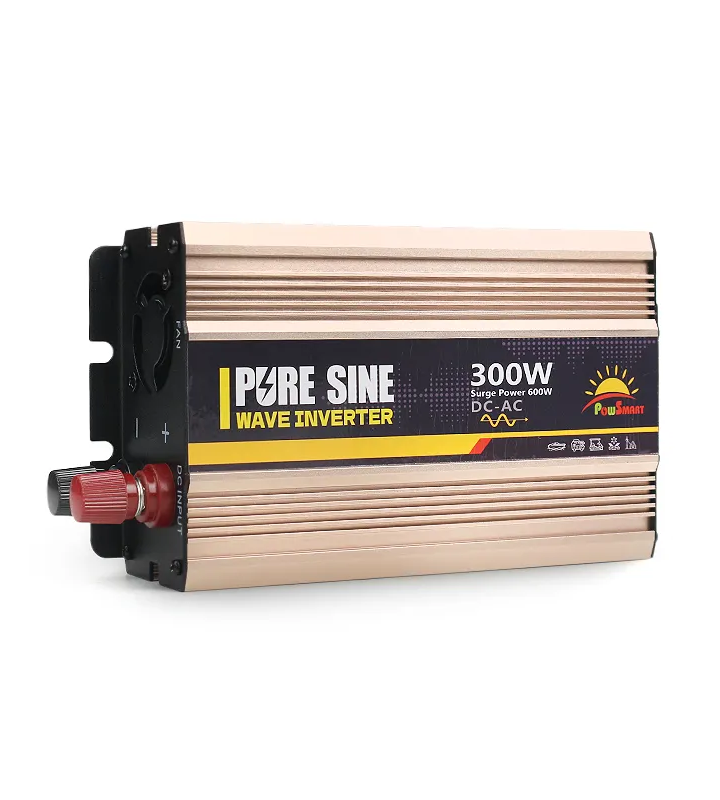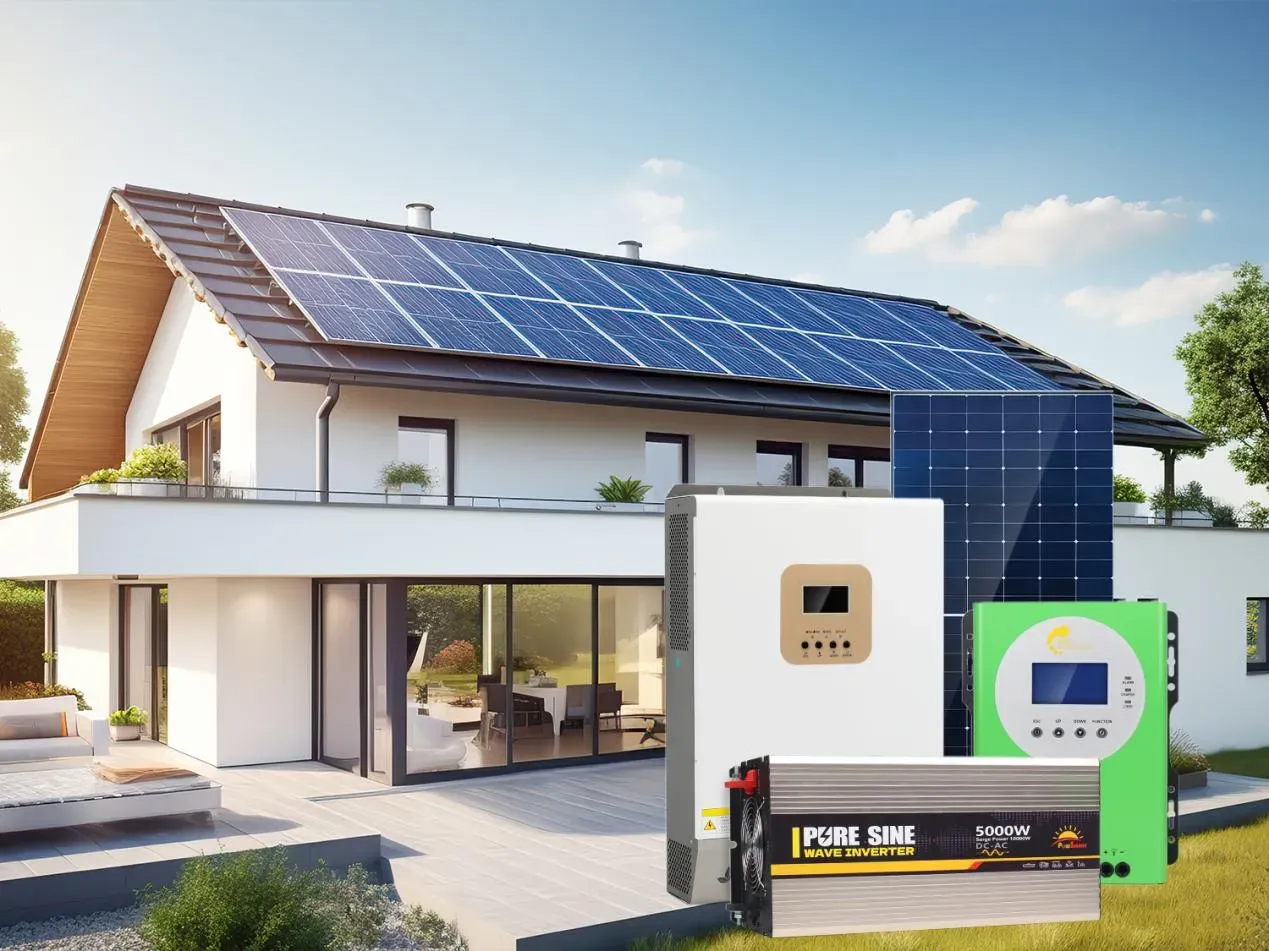
Unparalleled Performance on Building Sites
Building sites are known to demand a lot from any device. This is why our pure sine wave inverter has been designed to withstand the harsh conditions experienced on these sites. The device’s solid build and consistent performance guarantee that your power tools plus other machinery run smoothly without any interruptions. By providing an undeviating and clean electricity input, it reduces possibilities of sensitive equipment failure, thus extending their lifespan and enhancing reliability.
Specifically Designed for Solar Power Systems
Our inverters work seamlessly with solar energy installations thereby converting the direct current produced by photovoltaic panels into alternating current required to operate domestic appliances as well as industrial ones. As such, they are suitable both for family houses or business buildings. On account of its dependability and high efficiency it can lead you to achieving full exploitation of solar potential energy.
Ideal for Household Purposes
Should there be a power blackout that you need essential home appliances working or else everyday machines running all day round, we recommend using our pure sine wave inverter. It ensures steady flow of clean electric output which means your electronics will not be damaged due to power fluctuations hence serving for a long time without failures. In this way, it supplies constant electrical energy necessary for refrigerators and even home theatre systems.
Major Characteristics
True Sine Wave Output: makes them compatible with all types of gadgets hence reducing their possible damages.
High Energy Efficiency: increase the conversion rate that happens between solar energy and conventional forms.
Built Strong: meant for use in environments where they’re exposed so much such as construction projects.
Multifunctional Tools: applicable at homes, solar facilities as well as in industries alike.
At CN Inverter, we have dedicated ourselves to providing high-quality power solutions that adapt to our clients’ changing demands. Our commitment can be seen through our product-pure sine wave inverter which is highly dependable, efficient and flexible. Invest in our inverter and experience the difference in performance and peace of mind.

Basically, you can rely on compact power inverters that are ideal for portable devices as far as convenience and efficiency when on the move is concerned. Our compact invertors have been created with an aim of producing a consistent supply of energy in different environments thus becoming suitable for traveling, outdoor activities, and emergency situations. These types of invertors will ensure that your laptops, mobile phones or small appliances stay operational and charged no matter where you are situated. Our compact power inverters are lightweight and easily carried hence making them functionally useful while on the move to satisfy your demand for electricity anytime irrespective of the location.

Photovoltaic solar systems
Our photovoltaic solar systems are crafted to provide excellent performance and dependability. Using advanced technology and stringent testing, we ensure each system makes the most out of solar energy to meet your power needs. Our solutions are scalable and adaptable to many environments, ranging from small installations to large-scale solar farms.
Solar panel suppliers
We have partnered with well-known quality-conscious and innovative manufacturers of solar panels. This enables us offer a range of highly efficient, long-lasting panels that can optimize energy generation. Depending on whether you need monocrystalline, polycrystalline or thin-film panels, we have profound guidance for you while selecting the best ones for your project.
Solar module manufacturers
Our partnership with reputable companies in the production of solar modules ensures we remain at the leading edge of technology in this sector. These modules withstand harsh weather conditions but still maintain high conversion efficiencies. They are also versatile as they can be customized for residential rooftops commercial installations or even utility scale projects.
Key benefits
Efficiency: The utilization of sunlight for maximum capture and conversion.
Reliability: Consistent results whatever may come up next.
Sustainability: Clean energy options which decrease greenhouse gas emissions.
Supports: Professional advice on how to make a project ring true from its inception phase till final implementation stages.
Select CN Inverter as you go green and discover sustainable innovation at work!

High-Efficiency power inverters, which are indispensable to industrial applications require power that is transformed and delivered smoothly all the time. They present a high level of performance and durability in harsh industrial conditions since they are designed specifically for such purposes. Minimizing downtime and increasing productivity will be possible if you use these converters as it provides your industry equipment operates in an efficient manner. As such, our highly efficient industrial power inverters can provide reliable power to your industrial machinery or systems, thus enabling smooth running of your business operations due to their safety measures and strong construction.

As renewable energy integration changes its course in the world, hybrid solar inverters have evolved by combining functionalities of both grid-tied and off-grid. The maker of these inverters called Tian Lang has designed them in such a way that they can manage the production of solar energy, battery storage as well as grid connectivity easily and without any trouble. These two are critical components that assist in utilizing power from different directions and weather conditions especially when it is generated using photovoltaic panels. According to Tian Lang’s hybrid inverters charging algorithm which can be adjusted for adaptability is one thing that allows self-consumption with minimal electricity consumption cost by means of putting first between battery charging, solar input or grid supply. Suitable for residential developments, business premises and remote applications; this company’s products personify flexibility and durability on today’s sustainable energy solutions.

Sunrise New Energy is a one-stop provider of energy storage and photovoltaic power generation solutions. Our mission is to create a new way of life by integrating clean energy into our daily lives and achieving perfect harmony between man and nature. As a professional solar module and system solution provider, our products will benefit more people!
Our products include off-grid inverters, solar hybrid inverters, solar controllers, solar panels, storage batteries, PV off-grid systems, grid-connected systems, hybrid systems, PV racking systems, and other PV series products, and have been certified by FCC, ETL, CE, and so on.
Our inverters and batteries are designed for superior performance and reliability.
We ensure smooth processing and timely delivery of large-scale orders.
Our products feature cutting-edge technology for optimal energy solutions.
We provide responsive and knowledgeable support for all client needs.
A power inverter is an electronic device that converts direct current (DC) electricity, typically from batteries or solar panels, into alternating current (AC) electricity, which is used to power household appliances, electronics, and other devices that require AC power. Inverters are essential in off-grid solar systems, RVs, boats, and other situations where AC power is needed but only DC power sources are available. They come in various sizes and types, catering to different power needs and efficiency levels.
A 300 watt power inverter is capable of running small electrical devices that require up to 300 watts of power. Here are some examples of what you can typically run with a 300 watt power inverter:
Laptop: Most laptops consume between 20-100 watts, so a 300 watt inverter can comfortably power a laptop and even charge it.
Tablet and Smartphone Chargers: Chargers for tablets and smartphones generally require less than 30 watts of power.
Small Appliances: Small kitchen appliances like a blender or a coffee maker that operate within the 300 watt limit.
Lights: LED lights and small incandescent lights typically consume between 5-50 watts each.
Small Electronics: Devices such as cameras, portable DVD players, and gaming consoles that have modest power requirements.
It's important to check the specific power ratings of your devices to ensure they fall within the capacity of the inverter to avoid overloading it, which could lead to overheating or malfunction.
Installing a power inverter in a van allows you to convert DC power from your vehicle's battery into AC power, enabling you to run appliances and electronics while on the road or parked. Here are the general steps to install a power inverter in a van:
Choose a Mounting Location:
Disconnect the Battery:
Plan Cable Routing:
Connect to the Battery:
Install the Inline Fuse:
Mount the Inverter:
Connect the Inverter:
Secure and Insulate Connections:
Test the System:
Secure Loose Wires:
Final Checks:
Document Installation:
If you're unsure about any step or have specific concerns about your van's electrical system, consulting with a professional electrician or installer is recommended to ensure a safe and reliable installation.
Converting a car battery directly into a power outlet without using an inverter is not straightforward due to the difference in voltage and type of electricity involved. Car batteries provide direct current (DC) at 12 volts, while standard household outlets provide alternating current (AC) at 120 volts (in North America).
However, if your goal is to create a DC power outlet from a car battery for specific DC-powered devices, such as certain electronics or appliances that can operate on 12 volts DC, you can follow these steps:
Choose a Location:
Disconnect the Battery:
Prepare the Socket:
Connect the Positive Lead:
Install a Fuse:
Route the Cable:
Connect to the Socket:
Connect the Negative Lead:
Secure and Insulate Connections:
Test the Socket:
Secure Loose Wires:
Final Checks:
This method provides a way to create a DC power outlet in your vehicle directly from the car battery, which can be useful for powering specific DC devices or for charging items that accept 12 volts DC input, such as certain electronics and accessories.
